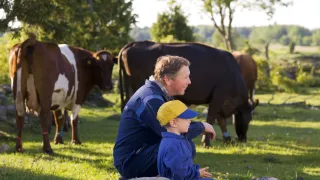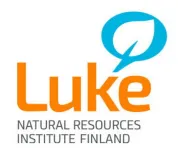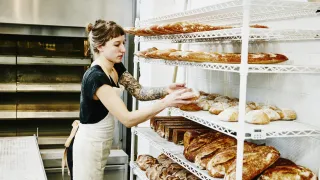Alternative bedding solutions for dairy cattle – LAKU


Objectives
- We will chart healthy, safe and sustainably produced bedding to replace peat. Our project focuses on the bedding alternatives of dairy cattle.
- We will examine the properties of various types of bedding from the perspective of animals, humans and the environment in a multidisciplinary manner.
- We will also take the economic and environmental impacts of bedding into consideration in our study.
- We will examine how bedding must be taken into account in the design and functionality of buildings and in the daily tasks in the cattlehouse.
Data and methods
In the cattlehouses to be studied, we will examine the employees’ exposure to the impurities produced when bedding is handled.
- Manure bedding separated from slurry contains intestinal bacteria and their endotoxins. They may be released into the air when the bedding is spread and used, which exposes workers to health hazards and illnesses affecting the respiratory system, in particular. Manure bedding may also contain zoonotic pathogens, i.e. infectious agents spreading between humans and animals.
- As for sand bedding, the dust from it may introduce carcinogenic quartz into the indoor air of the cattlehouse. Quartz is a health hazard in concentrations that exceed the limit values.
- Reed canary grass or other organic bedding may become moulded during storage, which increases health risks for both animals and humans.
Results and impact
We will produce an information package that comprehensively presents different bedding solutions. The instructions will allow farmers to choose the bedding that best suits their farm. We will also provide information on how entrepreneurs can anticipate and reduce risks and bad investments related to bedding.
Important elements to consider when selecting bedding for dairy cattle:
- The impacts of the bedding on the health and welfare of animals and people working in the cattlehouse and on food safety
- The bedding’s suitability and usability for cattlehouses
- The bedding’s economic and ecological sustainability.
We can also use the experiences and information package collected during the study in education, consulting and research in the field after the project has ended.
- We will also share he results with occupational health service providers working with agricultural entrepreneurs, and with the entrepreneurs and employees of livestock farms, themselves.
Our experts

Sirpa Laitinen
Working group
- Kirsi Karjalainen, senior specialist
- Eljas Kotilainen, senior specialist
- Marja Laitia, senior laboratory technician
- Jukka Mäittälä, development manager
- Heli Napari-Hyttilä, laboratory technician
- Talvikki Susiluoma, communications specialist
- Soili Tiitinen, co-ordinator
In co-operation with
Savonia University of Applied Sciences, Central Ostrobothnia Educational Consortium, Natural Resources Institute Finland, Oulu University of Applied Sciences, University of Oulu, TTS Work Efficiency Institute and approximately 20 farms participating in the study.
Funded by
EU Just Transition Fund (JTF)










